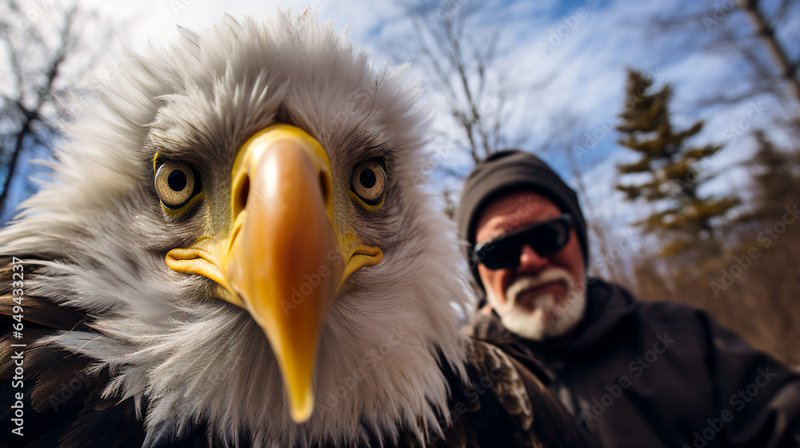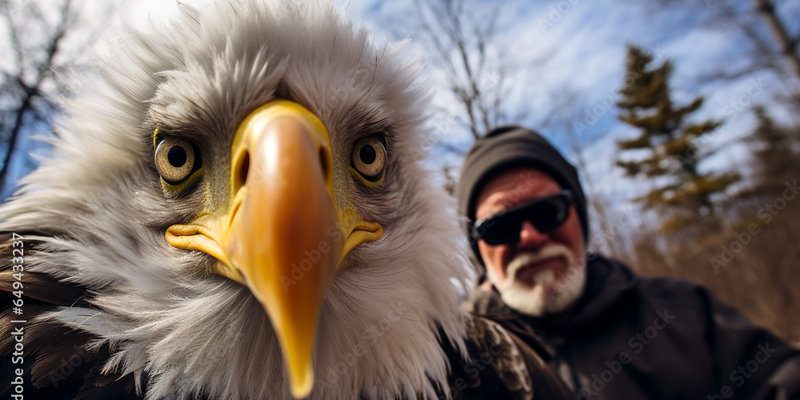
Conservation efforts aimed at protecting the bald eagle have involved various strategies, from legal protections to habitat restoration. It’s like putting together a puzzle where every piece matters. Some pieces are about creating safe spaces for these eagles to nest and thrive, while others focus on laws that protect them from harm. With careful planning and passion, volunteers, organizations, and government agencies have worked together to ensure that this symbol of America continues to soar across our skies.
The History of the Bald Eagle’s Decline
Understanding how we got to this point requires a look back in history. The bald eagle was once a common sight throughout the United States, from coast to coast. Unfortunately, this changed dramatically in the mid-1900s. A combination of factors contributed to their drastic population decline, primarily driven by habitat destruction and pesticide use.
These birds suffered when their natural habitats were destroyed for urban development and agriculture. To make matters worse, pesticides like DDT disrupted their reproductive cycle. Eagles that ate contaminated fish laid eggs with thinning shells, which often broke before the chicks could hatch. Here’s the thing: this wasn’t just a problem for the eagles; it signified a much larger environmental issue that affected many species.
As the bald eagle population dwindled, the government began to notice. In 1967, the U.S. Fish and Wildlife Service listed the bald eagle as endangered. This was a turning point, sparking a series of conservation efforts that would eventually turn the tide.
Legal Protections: The Bald Eagle’s Safety Net
One of the most significant steps in protecting the bald eagle came with the passing of federal laws designed to safeguard wildlife. The *Endangered Species Act of 1973* was a game changer. It provided a legal framework for conservation programs and ensured that the bald eagle received the protection it so desperately needed.
This act made it illegal to harm bald eagles or disturb their nests, offering them a much-needed safety net. Additionally, the *Bald and Golden Eagle Protection Act* enacted even stricter regulations, prohibiting the taking or possession of these birds without a permit. Suddenly, there was a legal backing that empowered authorities to act against those who might harm these eagles, reinforcing the idea that eagles have rights just like we do.
Let’s not forget the role of state laws. Different states implemented specific regulations to protect local eagle populations, creating a safety network that spanned the country.
Habitat Restoration: Bringing Back the Eagles’ Home
Now that we’ve covered the legal side, let’s dive into what’s being done to restore the bald eagle’s habitat. Think of it as renovating a house: without a proper place to live, eagles can’t thrive. Conservation groups have been hard at work to restore wetlands, forests, and shorelines—critical habitats where bald eagles build their nests and hunt for food.
Efforts include planting native vegetation, removing pollutants, and restoring waterways to clean up fish populations. This not only helps eagles but improves the entire ecosystem, allowing other wildlife and plant species to flourish. For example, when wetlands are restored, ducks, fish, and numerous insects return, creating a balanced environment that supports the bald eagle.
These habitat restoration projects often involve community support and education. It’s really inspiring to see local groups gather together—schoolchildren learning about eagles in their own backyards while planting trees that will provide future nesting sites.
Monitoring and Research: Keeping an Eye on the Eagles
To effectively protect the bald eagle, conservationists need data. That’s where monitoring and research come in. Scientists and volunteers have set up eagle cam systems, tracking nests and watching the behavior of these incredible birds. It’s like having a front-row seat to nature’s theater!
Through monitoring, experts can gather important information about eagle populations, breeding habits, and health. This data helps guide conservation efforts, allowing for adjustments based on what’s working and what still needs attention.
For instance, researchers have discovered preferences in nesting habitats that allow for more targeted habitat restoration. But monitoring isn’t just about collecting numbers; it’s also about telling the story of these magnificent birds, bringing awareness to their plight and inspiring others to contribute to their conservation.
Public Awareness and Education: Spreading the Word
Public awareness and education have played a huge role in the bald eagle’s conservation. You might be wondering, how can awareness help? When people understand the challenges that bald eagles face, they’re more likely to take action and support conservation initiatives.
Organizations like the National Audubon Society and local wildlife foundations run campaigns that highlight the importance of protecting eagles and their habitats. Programs in schools might include activities like eagle watching, art projects, or classroom discussions about environmental conservation. This grassroots approach builds a community of eagle advocates who can help spread the message far and wide.
Moreover, social media has become a powerful tool for engaging people in wildlife conservation. Stunning photos and videos of bald eagles in their natural habitat can touch hearts and inspire action. It’s amazing how a simple image can motivate someone to join a conservation effort or volunteer for a wildlife organization.
Success Stories: The Road to Recovery
Thanks to these combined efforts, the bald eagle’s recovery is a shining success story. From the brink of extinction, their numbers have rebounded dramatically. In the 1960s, there were only around 400 breeding pairs left in the continental United States. As of today, that number has soared to over 70,000 pairs! It’s like watching a comeback story unfold before our eyes.
This success wasn’t just luck; it was the result of hard work, dedication, and a community that came together for a common cause. In 2007, the bald eagle was removed from the endangered species list, a true testament to the power of conservation efforts.
But here’s the thing—while this is a huge victory, ongoing efforts remain crucial. The bald eagle still faces threats from habitat degradation, climate change, and pollution. It’s a reminder that while we’ve made progress, there’s always more work to do in the realm of wildlife conservation.
How You Can Help Protect the Bald Eagle
Feeling inspired? You don’t have to be a scientist or a conservationist to make a difference. There are plenty of ways you can help protect the bald eagle and contribute to conservation efforts:
- Support local wildlife organizations: Many local groups are dedicated to protecting eagles and their habitats. Volunteer or donate to support their initiatives.
- Spread awareness: Share what you’ve learned about bald eagles on social media or within your community. Knowledge is power!
- Practice responsible wildlife viewing: If you’re lucky enough to see a bald eagle in the wild, keep a respectful distance. Avoid disturbing their nests and habitats.
- Engage in eco-friendly practices: Reducing pollution and supporting sustainable practices can benefit ecosystems where eagles hunt and nest.
Small actions can lead to significant change. Every individual effort plays a role in creating a better world for bald eagles and the natural environment.
In conclusion, the journey to protect the bald eagle demonstrates both the challenges and triumphs of conservation. From historical decline to remarkable recovery, the combined efforts of individuals, organizations, and government agencies have shown us that dedicated action makes a difference. So, the next time you see a bald eagle soaring through the sky, appreciate the incredible journey it took to get there—and remember that we all have a part to play in protecting these magnificent birds for generations to come.

